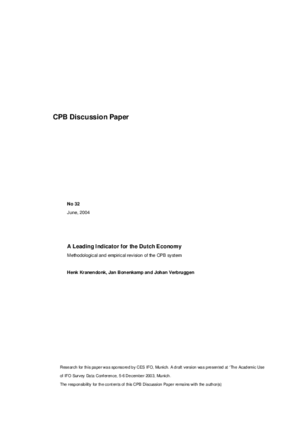A leading indicator for the Dutch economy; methodological and empirical revision of the CPB system
Special attention has been paid to the role and significance of IFO data. The structure of the CPB leading indicator is tailored to its use as a supplement to model-based projections, and thus has a unique character in several respects. The system of the CPB leading indicator is composed of ten separate composite indicators, seven for expenditure categories (‘demand’) and three for the main production sectors (‘supply’).
This system approach has important advantages over the usual structure, in which the basis series are directly linked to a single reference series. The revised system, which uses 25 different basic series, performs quite well in describing the economic cycle of the GDP, in indicating the upturns and downturns, and in telling the story behind the business cycle.
